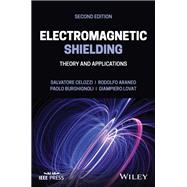Comprehensive Resource for Understanding Electromagnetic Shielding Concepts and Recent Developments in the Field
This book describes the fundamental, theoretical, and practical aspects to approach electromagnetic shielding with a problem-solving mind, either at a design stage or in the context of an issue-fixing analysis of an existing configuration. It examines the main shielding mechanisms and how to analyze any shielding configuration, taking into account all the involved aspects. A detailed discussion on the possible choices of parameters suitable to ascertain the performance of a given shielding structure is also presented by considering either a continuous wave EM field source or a transient one.
To aid in reader comprehension, both a theoretical and a practical engineering point of view are presented with several examples and applications included at the end of main chapters. Sample topics discussed in the book include:
- Concepts in transient shielding including performance parameters and canonical configurations
- Time domain performance of shielding structures, thin shields, and overall performance of shielding enclosures (cavities)
- How to install adequate barriers around the most sensitive components/systems to reduce or eliminate interference
- Details on solving core fundamental issues for electronic and telecommunications systems via electromagnetic shielding
For industrial researchers, telecommunications/electrical engineers, and academics studying the design of EM shielding structures, this book serves as an important resource for understanding both the logistics and practical applications of electromagnetic shielding. It also includes all recent developments in the field to help professionals stay ahead of the curve in their respective disciplines.









